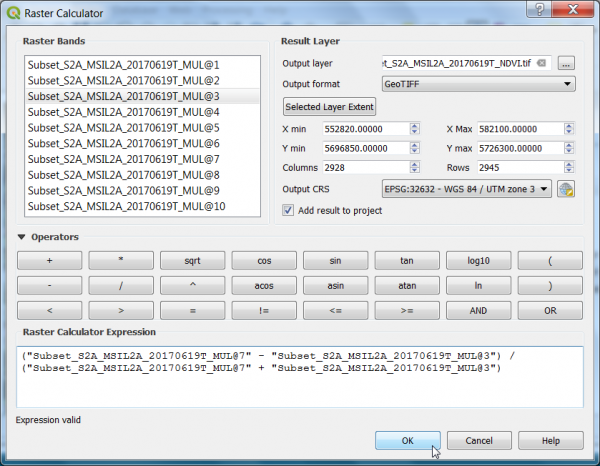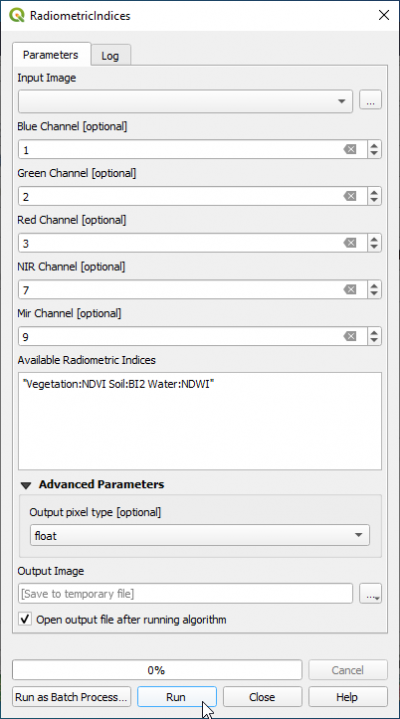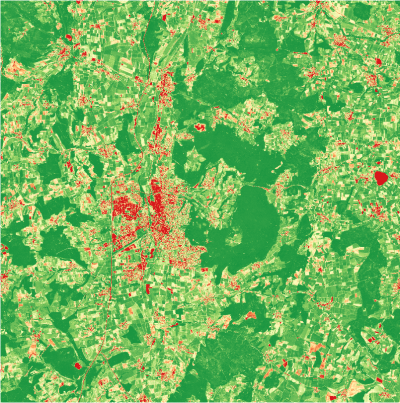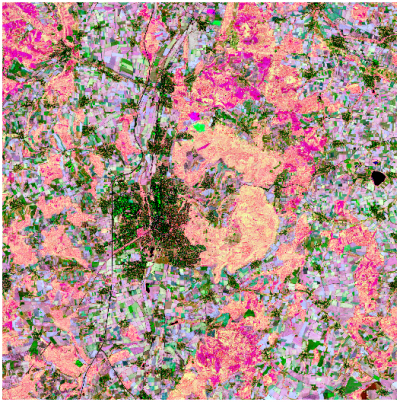Spectral indices
From AWF-Wiki
(Difference between revisions)
(→Spectral vegetation index using Raster Calculator) |
(→Spectral vegetation index using Raster Calculator) |
||
| Line 9: | Line 9: | ||
* Select the {{button|text=Symbology}} tab. Under '''Render type''' select {{button|text=Singleband pseudocolor}}. | * Select the {{button|text=Symbology}} tab. Under '''Render type''' select {{button|text=Singleband pseudocolor}}. | ||
** Open the In the pulldown menu of {{button|text=Color ramp}} by clicking on [[File:Qgis_pull_down.png]] Select {{mitem|text= All color ramps --> RdYlGn}}. In the {{button|text=Mode}} select {{button|text=Equal interval}}. Set the number of {{button|text=Classes}} to 10. | ** Open the In the pulldown menu of {{button|text=Color ramp}} by clicking on [[File:Qgis_pull_down.png]] Select {{mitem|text= All color ramps --> RdYlGn}}. In the {{button|text=Mode}} select {{button|text=Equal interval}}. Set the number of {{button|text=Classes}} to 10. | ||
| − | In the pulldown menu of {{button|text=Color ramp}} select | + | In the pulldown menu of {{button|text=Color ramp}} select {{mitem|text=Invert Color Ramp}}. |
** To finish, click {{button|text=Apply}} (see '''Fig. A'''). | ** To finish, click {{button|text=Apply}} (see '''Fig. A'''). | ||
Revision as of 09:54, 27 November 2020
Spectral vegetation index using Raster Calculator
- Click the Open Data Source Manager
 and then Add raster layer
and then Add raster layer  and select the file /geodata/lucc/s2/Subset_S2A_MSIL2A_20170619T_MUL.tif.
and select the file /geodata/lucc/s2/Subset_S2A_MSIL2A_20170619T_MUL.tif.
- Check the rank and spectral range of bands in the multiband file (e.g. see table Changing Raster Layer Style).
- Click Raster --> Raster calculator.
- A powerful normalization is realized by the normalized difference vegetation index that forms the basis of most vegetation indices $NDVI = (Nir - Red) / (Nir + Red)$. It can be implemented using Raster Calculator as seen in the following screenshot:
- Define path and file name of the output layer. OK.
- Map visualization: Open the raster layer properties by right-clicking the ndvi raster in the TOC selecting Properties, or by simply double clicking.
- Select the Symbology tab. Under Render type select Singleband pseudocolor.
In the pulldown menu of Color ramp select Invert Color Ramp.
- To finish, click Apply (see Fig. A).
Several spectral indices at once using Processing Toolbox
A convenient module for calculating one or several spectral indices at the same time can be found in the QGIS processing toolbox.
- Type Radiometric into the search field and find the OTB --> Feature Extraction --> Radiometric Indices tool.
- Open it with a double click.
- Assign the bands in the multiband file to the correct spectral sensitivity.
- If you want to calculate a single spectral index type in the text field Available Radiometric Indices: "Vegetation:NDVI"
- If you want to calculate several spectral indices at once and store them in a multiband file click Help to find definitions of available spectral indices in three categories (vegetation, water, soil) and relevant channels of the input multiband image.
- Click Run.
- In the text field Available Radiometric Indices type with apostrophs:
"Vegetation:NDVI Water:NDWI Soil:BI2"



